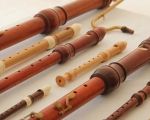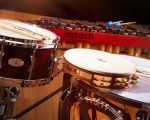The Oldest Musical Instrument: A Journey Through Time
Music has been an integral part of human civilization for thousands of years, but what is the oldest musical instrument ever discovered? As we explore the ancient history of music, we discover that musical instruments have evolved over time, from simple sounds created with natural materials to the sophisticated instruments we use today. In this article, we’ll take a deep dive into the history of the oldest known musical instruments, their cultural significance, and how music has shaped human life across the ages.
1. The Origins of Music: Early Beginnings
Long before modern instruments, early humans were creating sounds and rhythms using whatever materials were available. Some of the earliest forms of music were likely created by hitting stones or logs together, a rudimentary form of percussion. As civilizations advanced, so did the complexity of musical instruments.
The oldest known musical instruments date back tens of thousands of years. Among these ancient artifacts, the flute stands out as one of the most significant. Archaeological findings suggest that prehistoric humans were already crafting flutes from bones and ivory as early as 40,000 years ago, making it one of the oldest surviving musical instruments.
2. The Discovery of the Prehistoric Flute
One of the most significant discoveries in the history of musical instruments came in 2008, when archaeologists found a flute made from the bone of a vulture in the Hohle Fels cave in Germany. This flute, dated to approximately 40,000 years ago, is the oldest known musical instrument. Its discovery has provided valuable insights into the cultural practices of prehistoric humans.
The flute was carved from a vulture's wing bone, with small holes that allowed it to produce distinct notes. The fact that early humans were able to create such a complex instrument suggests that music played a vital role in their society, possibly for ritualistic or social purposes. This flute is not only a testament to the creativity and ingenuity of early humans but also a clue into the spiritual and social life of prehistoric cultures.
3. The Role of Musical Instruments in Ancient Civilizations
In ancient civilizations such as Mesopotamia, Egypt, and China, musical instruments became more sophisticated and widespread. By this time, instruments like the lyre, harp, and early forms of stringed instruments were commonly used in religious ceremonies, entertainment, and communication.
The ancient Egyptians, for instance, created a variety of stringed instruments, including the harp, which was depicted in numerous tombs and artifacts. The harp, dating back to around 3,000 BCE, was considered a symbol of divine power and was often associated with the gods.
In ancient Mesopotamia, the lyre was another popular instrument, often played by bards to accompany epic poetry and storytelling. These instruments were crafted with great care and played an essential role in the social and cultural life of these ancient societies.
4. The Evolution of Instruments: From Simple to Complex
As time passed, musical instruments continued to evolve. In the medieval period, instruments such as the organ and early versions of string instruments like the violin began to appear. The Renaissance period brought further innovation, with the development of more refined stringed instruments like the lute and viol. These developments laid the groundwork for the complex orchestral instruments we know today, such as the violin, trumpet, and piano.
In addition to the evolution of physical instruments, the concept of music itself grew more complex. Music theory emerged, allowing composers to write more intricate compositions that could be performed with a variety of instruments. This advancement not only enriched musical expression but also gave birth to classical music as we know it.
5. How Musical Instruments Influence Culture and Society
Music has always been a reflection of culture and society, and instruments are often at the heart of this expression. From the rhythm of African drums to the intricate melodies of Western classical music, each instrument tells a story about the people who created it and the society in which it thrived. Instruments like the drum, for example, have been used in countless cultures for both communication and celebration.
In modern times, musical instruments continue to shape cultures around the world. While technology has introduced electronic instruments and digital music, the origins of these instruments can still be traced back to the earliest forms of music-making. Understanding the oldest musical instruments helps us connect with our shared history and the role music plays in our lives today.
6. The Continued Fascination with Ancient Instruments
Today, many musicians and music historians are fascinated by the ancient instruments that have survived through the ages. Collectors and enthusiasts often seek out replicas or original pieces from these early instruments to study and preserve the heritage of music. In fact, some musicians specialize in recreating the sounds of ancient instruments, providing a unique listening experience that connects modern audiences with the past.
Modern recreations of prehistoric flutes and lyres, for example, offer listeners a glimpse into the sounds that might have filled the air thousands of years ago. This interest in ancient instruments is not only a way of preserving cultural history but also serves as a reminder of the universal nature of music and its ability to transcend time.
7. Conclusion: Understanding the Significance of Music’s Origins
The discovery and study of the oldest musical instruments reveal much about the creativity, culture, and societal values of early humans. Instruments like the prehistoric flute highlight the importance of music in ancient societies, providing insight into how early humans used music for communication, spiritual expression, and social bonding.
As we explore the history and design of these instruments, we can better appreciate the role music continues to play in our lives. Whether through the ancient sounds of a flute or the modern harmony of a piano, musical instruments bridge the gap between past and present, connecting us to the enduring power of music. Understanding the origins of these instruments allows us to honor the rich musical legacy that has shaped cultures across the globe.








